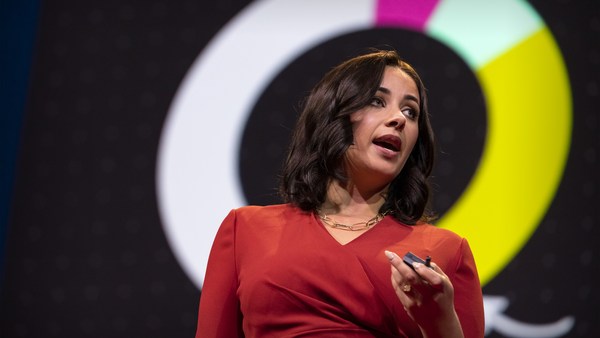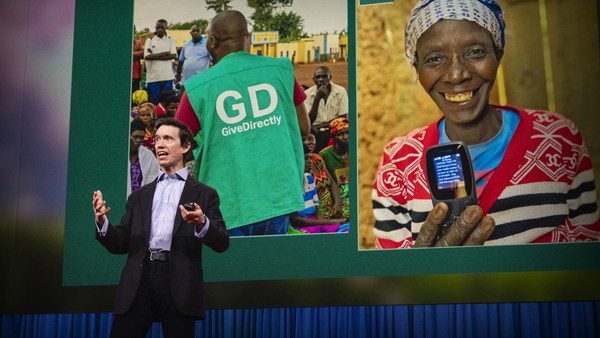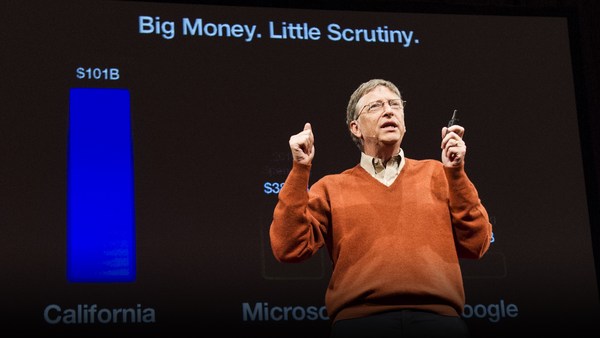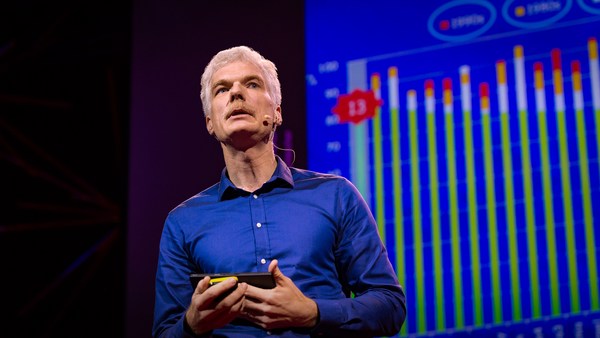So the good news on global development is that key indicators, like child mortality and school enrollment, are better today than at any point in human history. However, the bad news is that though many more children are surviving, large numbers are not thriving.
As of 2022, we had nearly 150 million stunted children, or around 22 percent of the world's children. Similarly, 70 percent of children aged 10 in low- and middle-income countries could not read a simple passage. Put together, the world is behind schedule on over 85 percent of the United Nations' Sustainable Development Goals.
Now, at one level, this might seem very bleak, but I'm here today to tell you that I'm optimistic that we can accelerate global development, because there is a free lunch. OK, now you may be thinking, "Is this guy really an economist?" You know, we're taught that the first, basic lesson of economics is that there is no such thing as a free lunch. But I am a professor of economics, and I am going to show you a free lunch today.
And the source of this free lunch comes from the fact that over the past two decades, the explosion in the availability of data, computing power and better research methods, including the growing use of randomized controlled trials in social policy, has helped us identify large sets of interventions that have a 10x return on investment that we’re not acting on. At the same time, the research has also identified that governments around the world spend billions of dollars on interventions that are pretty ineffective.
And so the free lunch is pretty simple, that we can deliver a lot more for global development, not necessarily by spending more, but by spending smarter, which basically means spending less on things that are less effective and more on underfunded ideas that could be transformative.
So let's explore this with a deep dive into global education. As with all other areas, the good news is that school enrollment is higher today than it ever had been before. The bad news is that this increase in enrollment has not translated into learning outcomes. So with 70 percent of 10-year-olds in low- and middle-income countries not able to read a simple passage, we have a global learning crisis.
This is both a moral tragedy for the individual children whose lifelong capabilities and opportunities are constrained by weak education, but it's also a tragedy for their countries, because it limits long-term productivity and economic growth.
Now, the normal approach to dealing with this problem is to say we need to spend more, either through more foreign aid or through higher government budgets. But what the research also shows is that most of the business-as-usual spending that we do is not very effective. In particular, we have studies showing that upgrading school infrastructure, hiring more credentialed teachers, increasing teacher pay, or even giving students free textbooks and laptops don't seem to be having much of an impact. So the question is, what is going on? How do you make sense of this?
Now, one problem is a problem of governance and accountability, which limits the translation of public expenditure into outcomes. But a bigger problem may be weaknesses in pedagogy and teaching within the classroom, as seen in this figure. Now this figure comes from one of my studies in India, with a sample of over 6,000 kids, and I consider it to be perhaps the most important figure for understanding education in low- and middle-income countries.
The x-axis here is the grade in which the student is enrolled. The y-axis is the level of learning. Now if students were making progress as per the rate of the curriculum, they should be on that 45-degree red line. In practice, kids fall behind quickly, for a variety of reasons, and stay behind. And the true rate of progress is around half of what is in the curriculum, as seen by the blue line. So what that means is your average eighth-grade kid in public school in India has about a fourth-grade level of understanding of mathematics.
Now, further, with dynamic computer adaptive testing, we can pinpoint the exact learning level of every student in the sample. And so every circle here represents about 10 kids. And what you see now is if you focus on the eighth-grade part of that picture, is that in one eighth-grade classroom, you have students at a second-grade level, at a third, at a fourth, at a fifth, all the way up to an eighth-grade level of understanding. That means that this teacher has a nearly humanly impossible task of catering to that kind of variation in the classroom.
And so what does the teacher do? Even a sincere, motivated teacher will focus on completing the curriculum and the textbook. But the problem is that does not translate into much learning, because it is so far ahead of the level of where the kids are.
(Speaks in Hindi)
(Cheers and applause)
Now, what have I just done to you?
(Laughter and applause)
I have given you 25 seconds in the shoes of a typical kid in a typical classroom, in millions of schools around the world.
(Cheers and applause)
And so what that helps you understand is I could be highly motivated, highly qualified, highly sincere, but that instruction is not going to result in learning, because it's way above your level of understanding, and it will only reach a small fraction of the kids in the class, as we saw by those who put up their hands in this room.
(Laughter)
And now that also helps make sense of why default things like upgrading school infrastructure, increasing teacher pay, giving free textbooks or even free laptops, often don't seem to have much of an impact. And that's because they're not addressing the binding constraint to learning, which is the mismatch between instruction and comprehension.
Now, while free tablets or laptops don't seem to have much impact by themselves, we found large positive effects of customized learning software, called MindSpark, in India, that was able to tailor instruction to every kid in the class. And so now, in that same eighth-grade class, you've got kids at completely different levels, but who are being taught at a level that's right for them. And the results were stunning. We saw among the largest gains in any education study done in developing countries, and in four months of the program, they gained about a full year of learning.
OK, so that's the case to be optimistic. But this is TED. And so before we think that technology will replace the teacher, here's another tale of caution. During COVID, we ran another randomized controlled trial that gave a large number of kids free tablets with MindSpark, that we know works, and we gave it to them to use at home when schools were shut down. And unfortunately, the impact was exactly zero. And we know why, because you can track the usage, and you see that, without the adult supporting the child, there is no engagement and no learning.
OK, so put together, what this tells us is that technology has the potential to be transformative, but it's not a silver bullet by itself. But if you use the data and the evidence to iterate the solution, you can use technology to transform education at scale.
In other cases, completely low-tech interventions can be highly effective, such as remedial after-school tutoring programs, often run by high school graduates with no formal teacher training.
In another recent study, we studied the impact of one of the world's largest COVID remediation education programs, run by the Indian state of Tamil Nadu. So in this program, the government hired about 200,000 young women with a high school degree to provide 60 to 90 minutes of remedial instruction after school. And it reached over three million students, and the program was highly effective, improved equity and was about 10 times more cost-effective than usual education spending. But that program would have been discontinued if we didn't present that study to the government leadership, because they would have thought, "It's one year after COVID. We don't need this."
Now, this pattern of 10x ROI investments is not restricted to education. In sector after sector, ranging from education, early childhood development, welfare programs and even justice, the research over the past decade has identified a series of 10x ROI opportunities. Now, if you’re a private-sector investor and I’m offering you a 10x ROI, you'd be clamoring to put as much money to work as possible in that opportunity. But governments often don't act on these ideas, due to a combination of inertia, risk aversion and lack of political and bureaucratic incentives to act.
As an economist, I don't worry about how Toyota produces its cars, because you face market prices for inputs and market prices for outputs, and if you're not efficient, there's competitive pressure to get you there. In contrast, governments can spend taxpayer money badly, and leave 100-dollar bills lying on the sidewalk for a really long time because they don't face a market test for their actions, and don't get the feedback on the effectiveness, or lack thereof, of their spending. And that's why research and evidence is especially important for guiding effective public spending, way more so than in the private sector, where you have the incentives that push you there.
Now, it's going to be easy to think that governments are these big, lumbering beasts, which they are. But there is absolutely no getting away from the centrality of improving government effectiveness for global development. And that's because the problems of development are concentrated among the poor, and markets will typically not cater as much to the poor. Markets are wonderful things, and provide the incentives for the innovation and the dynamism needed to power modern economies. But markets don't care for you if you don't have purchasing power.
And so the basic tension here is that the democratic ideal is one person, one vote, whereas the market values you on a one dollar, one vote principle. And that's why there's no getting away from building effective public systems to make sure that we can get the benefits of innovation to the poor at scale, who otherwise would not be able to afford them. This is how --
(Applause)
This is how we managed to substantially reduce infant mortality in the 20th century. It was not enough to have new knowledge on effective medical interventions, like vaccinations or oral rehydration therapy for diarrhea. It was essential to build the public systems that could take that new knowledge and deliver that at scale, and reach the poor, who otherwise would not be able to access these benefits.
So, to summarize, in a world of slowing economic growth, climate change, wars and scarring from pandemics, there's a very real risk that progress in global development slows down, or even reverses. But we have reason to be optimistic that there is a huge free lunch on the table that we can act on by using data and evidence to improve the effectiveness of public spending.
But just because it's free does not mean it is easy. It is free because you can achieve a lot more by spending smarter rather than spending more. But it is not easy, because that requires us to work with governments and patiently build the public systems to improve the effectiveness of public expenditure that can reach the poor at scale.
This is, increasingly, what I've been working on, and I'm incredibly encouraged by my engagements and interactions with many outstanding government officials, in India and around the world, who want to do exactly this. And that's why I'm optimistic that we can sharply accelerate global development.
Thank you.
(Cheers and applause)





